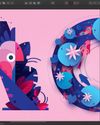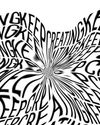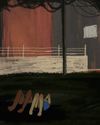The Dos And Don'ts Of Branding In The Era Of Distrust
Computer Arts - UK
|August 2018
Asa Cook examines the fine art of appearing personable in brand campaigns

Remember when branding used to be called ‘corporate identity’? It spoke to one of the key branding rhetorics of the day: ‘you can trust me because I’m a big, global business.’
But last year’s damning research by Ipsos Connect revealed that 42 per cent of people claim to distrust big brands and 69 per cent distrust advertising. As a result, brands don’t always want to look big, corporate and powerful anymore. They want to look real and personable and reflect their true values and roots.
Some attempts to do this can be very successful, building brand loyalty and bolstering beliefs in what a brand stands for. But equally, some attempts to appear more human can be met with massive skepticism and at worst, fury.
So, how can brand designers successfully navigate this minefield? Success comes from telling the human story and getting the tone just right.
An example of brilliant thinking when it comes to this was KFC’s response to the recent ‘chicken crisis’. In a press ad by Mother, the letters of the ‘KFC’ identity were playfully rearranged to read ‘FCK’. It expressed a genuine, human reaction to the issue with the brand holding its hands up and acknowledging its failings with a perfect, relevant tone of voice for the moment. Implicit in the art direction is the idea that KFC’s chicken is so good that it’s unsurprising supplies ran out. It’s genius and I’d be amazed if it doesn’t win awards.
Esta historia es de la edición August 2018 de Computer Arts - UK.
Suscríbete a Magzter GOLD para acceder a miles de historias premium seleccionadas y a más de 9000 revistas y periódicos.
¿Ya eres suscriptor? Iniciar sesión
MÁS HISTORIAS DE Computer Arts - UK
Computer Arts - UK
Creative Space
Without’s creative director roly grant on the studio’s hand-crafted ethos
2 mins
June 2020
Computer Arts - UK
studio profile
A leading light in the branding industry, Wolff Olins wants to harness its scale to help change the world
8 mins
June 2020

Computer Arts - UK
network
THE CREATIVE COMMUNITY HAS COME TOGETHER LIKE NEVER BEFORE, TO HELP EACH OTHER GET THROUGH THE CORONAVIRUS PANDEMIC
2 mins
June 2020

Computer Arts - UK
project
ethos for 305 Fitness - Learn how the Montreal identity design studio rebranded one of America’s hottest fitness clubs
5 mins
June 2020

Computer Arts - UK
rebrand
WHAT’S THE EXPERT OPINION ON PENTAGRAM’S BRAND IDENTITY REFRESH OF THE GLOBAL TOY COMPANY FISHER-PRICE?
3 mins
June 2020
Computer Arts - UK
opinion
CRAIG BLACK HAS SOME ADVICE FOR SURVIVING THE CORONAVIRUS CRISIS AS AN INDEPENDENT CREATIVE
5 mins
June 2020

Computer Arts - UK
fresh eyes
DUNCAN BRAZZIL ON HOW THE UK INSPIRED HIS CAREER
1 min
June 2020

Computer Arts - UK
artist insight
Cindy Kang on how photography informs her illustration work
5 mins
June 2020
Computer Arts - UK
ANIMATION NOW
LEADING PRODUCERS AND FILMMAKERS REFLECT ON EMERGING TRENDS AND SHARE THEIR PREDICTIONS FOR THE YEAR AHEAD
17 mins
June 2020
Computer Arts - UK
Project: Atoll by Studio Myerscough
Morag Myerscough reveals how she and Luke Morgan designed a vibrant biophilic installation in a central London office tower studiomyerscough.com
4 mins
May 2020
Translate
Change font size

